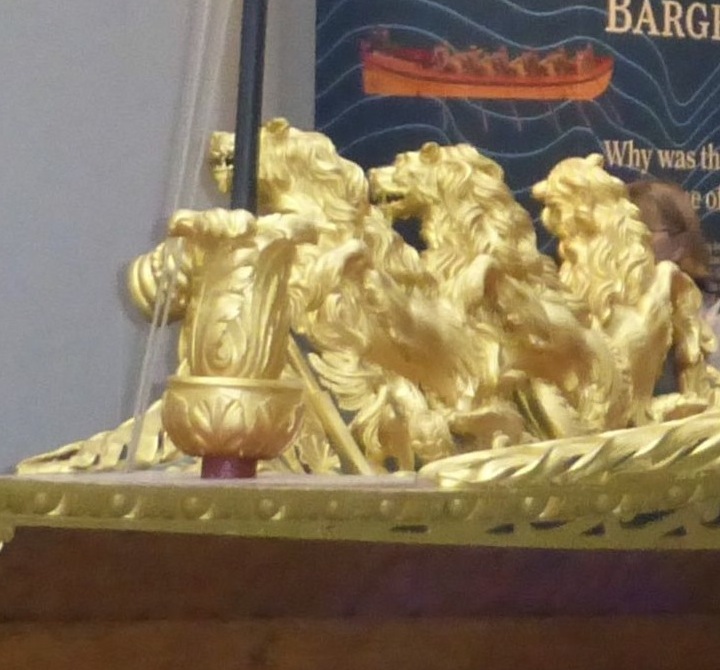
Prince Frederick's Barge at the National Maritime Museum, Greenwich. The barge was designed by William Kent (1684-1748) and built by John Hall for Prince Frederick, the eldest son of George II and therefore Prince of Wales at that time (hence the Prince of Wales heraldic emblem of three feathers rising from a coronet, in the middle of the peow), and launched on the Thames in 1732.

As well as a barge-master, the barge needed 21 men to row it, and the oars seen here are their original ones. It was very ornately carved, and gilded with 24-carat gold leaf.
The museum information plaque records that its last use on the River Thames was by Prince Albert in 1849, when he and the Princess Royal went down the Thames in style for the opening of the new Coal Exchange (a report about the new exchange appeared in the Illustrated London News of 3 November that year). After the barge fell out of use, Queen Victoria loaned it to the Science Museum in 1883, and it was brought here to the National Maritime Museum in 1951.

The Prince of Wales's heraldic emblem in the prow.
Text and photographs by Jacqueline Banerjee. Special thanks to the National Maritime Museum at Greenwich for allowing photography outside its special exhibitions. You may use these images without prior permission for any scholarly or educational purpose as long as you (1) credit the photographer and (2) link your document to this URL or cite it in a print document. [Click on the images to enlarge them.]
Related Material
- The Queen's New Barge for Virginia Water (1877)
- The Old Royal Naval College, Greenwich, and its Environs: Their Victorian Interest (ncluding the National Maritime Museum)
Bibliography
Information plaque at the museum
"The Royal Barge 1731-32." The Royal Collection. Web. 16 November 2017.
Created 16 November 2017